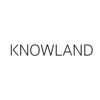
Data reveals 70.4 percent year-over-year growth in U.S. meetings and events, according to Knowland

Knowland continued its monthly monitoring of the top 25 markets to identify those that are leading the industry in meeting and event volume. Today the company announced the Chicago market led the U.S. meetings and events industry by volume for May for the second month in a row. Second place again went to Washington D.C., with Los Angeles/Long Beach in third. This data is a subset of Knowland’s sales intelligence platform designed to help hoteliers build and protect a hotel’s revenue base.
In terms of corporate industry segments for the month, Sports and Entertainment showed the strongest performance with 199.7 percent of 2019 event volume, while Training /Education was a low performer with 76.8 percent of 2019 volume.
- Year-over-year comparison – May 2023 event volume increased 70.4 percent over May 2022.
- Top five markets (by event volume) – Chicago was in the lead, hosting National Association meetings followed by Weddings and Pharma/Biotech. The following four markets, Washington D.C., Los Angeles/Long Beach, Dallas, and San Diego rounded out the top five. Below is additional insight into the top drivers for these markets.
- Chicago: National Association, Wedding, Pharma/Biotech, Education and Healthcare.
- Washington DC: National Association, Travel, Education, Charity/Non-Profit/Social, and Training/Education.
- Los Angeles: Education, Wedding, National Association, Financial/Banking, and Technology.
- Dallas: Healthcare, Financial/Banking, Technology, Wedding, National Associations.
- San Diego: National Association, Wedding, Technology, Pharma/Biotech, HealthCare.
- Top five markets (by percentage growth) – The top five markets by year-over-year growth in meetings and events were Norfolk-Virginia Beach, VA; Raleigh-Durham-Chapel Hill, NC; Oklahoma City, OK; Hawaii-Kauai Islands; Salt Lake City-Ogden, UT.
Insights presented are a result of the analysis of meetings and events data acquired through Knowland data collection and aggregation methods, including field reporting and automated methods of customer and non-customer data collection in primary, secondary, and tertiary markets, as well as its large historical database.